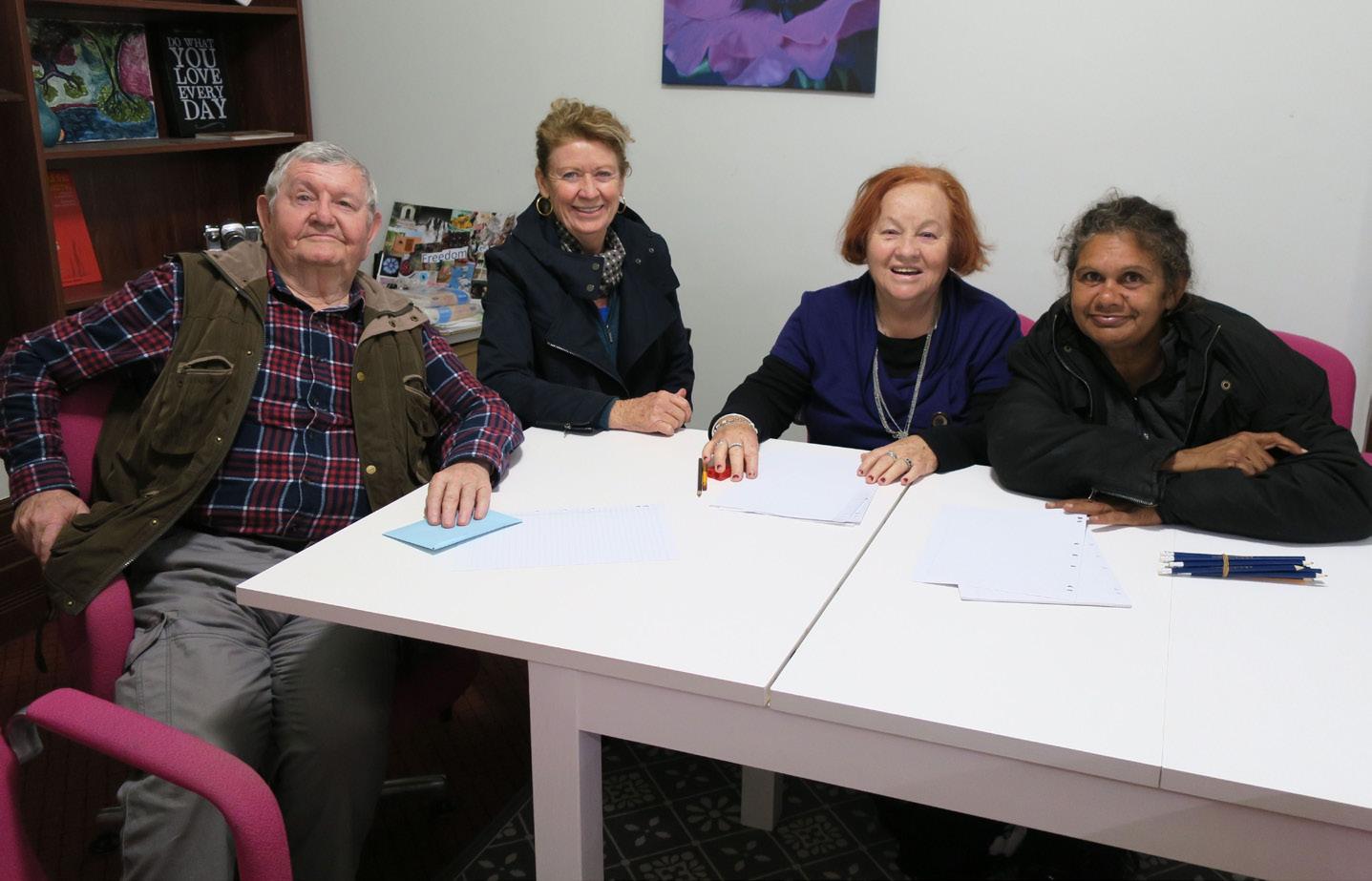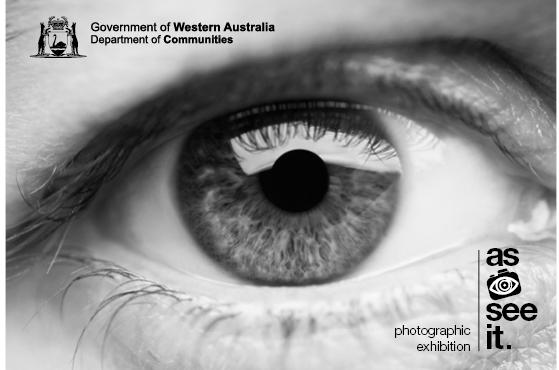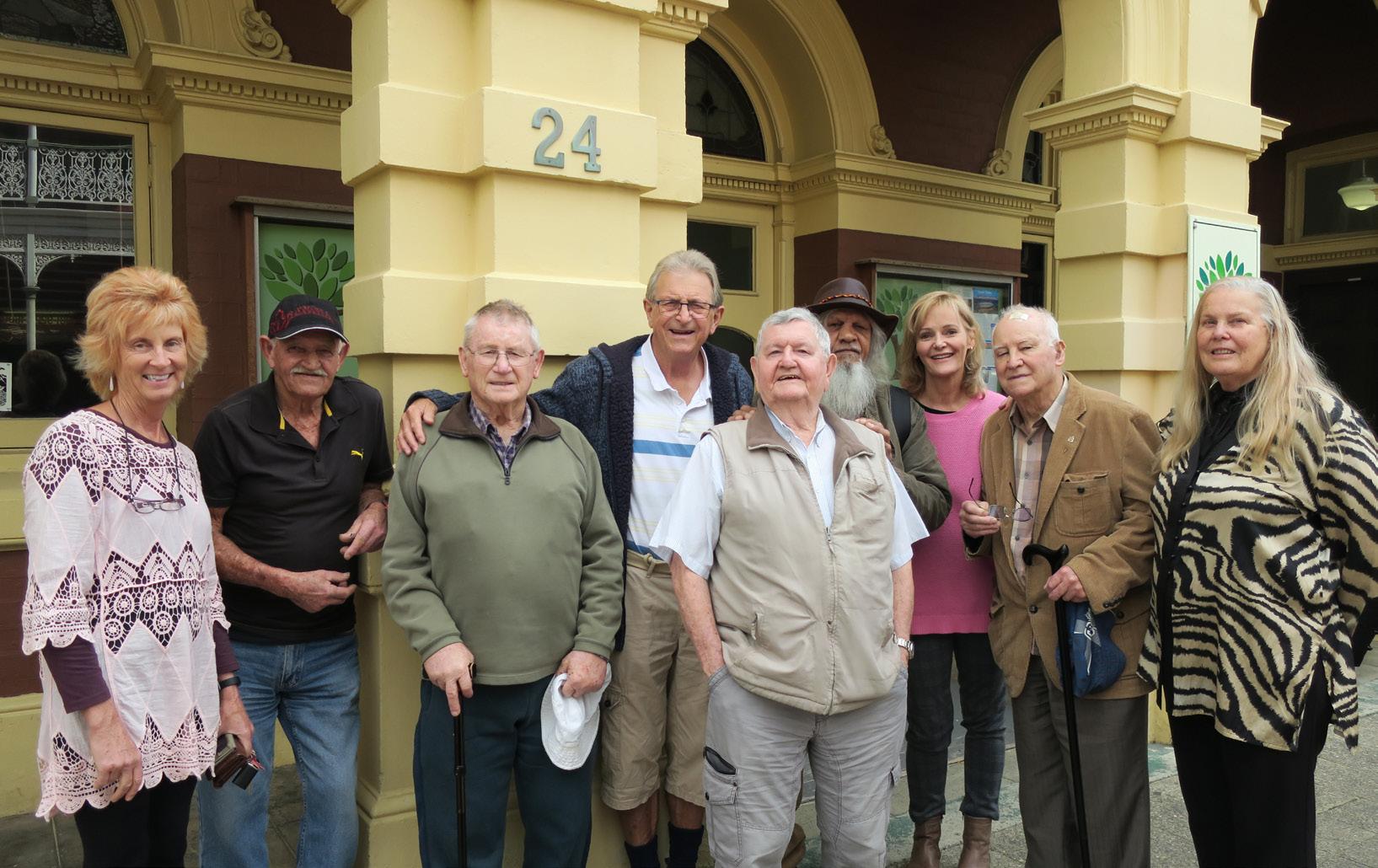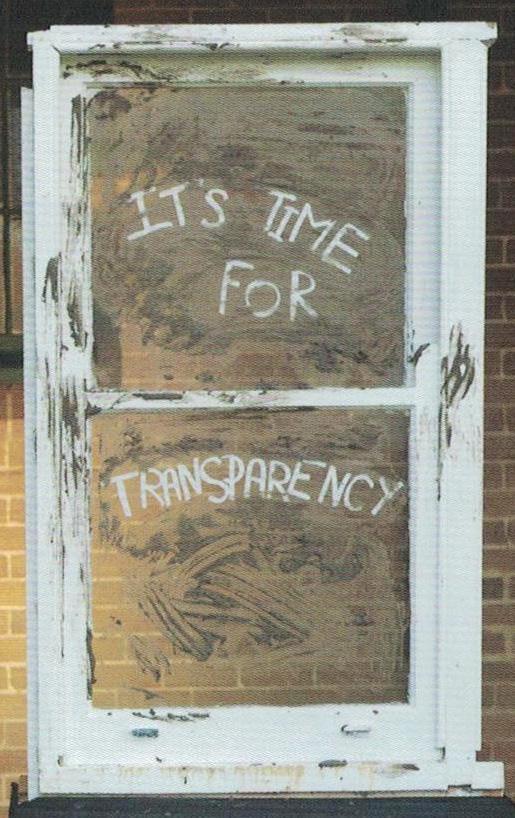
9 minute read
Heal for Life goes to Whitemoor
Clive Morrison is an Aboriginal Elder and Tuart Place participant.
In October last year, Clive was being photographed outside the Roundhouse, which is just down the road from Tuart Place in Fremantle. A Roundhouse staff member came over and asked him if he would like to raise the Aboriginal flag.
Advertisement
Clive was indeed happy to raise the flag. He said later that he had felt very proud to have been asked and pleased that Aboriginal people were being recognised in this way.
Fremantle’s historic Roundhouse raises the Aboriginal flag every day to demonstrate respect for the Whadjak Nyoongar people and their land.
This and other Roundhouse activities are in keeping with Fremantle’s Walyalup Reconciliation Action Plan.
Heal for Life goes to Whitemoor Prison

by Dale Lynch Besides my role as a Board member of FACT, I have been involved with the Heal for Life (HFL) Foundation since 2010, firstly doing my own healing and then as a peer support volunteer and mentor, working with people who have also endured childhood trauma and abuse.
In October last year Liz Mullinar (Founder of HFL) invited me to help her present a module on ‘The Effects of Trauma on the Brain’ at a prison in London. We were to be accompanied by Henri Seebohm, a psychologist and counsellor who has worked in UK prisons.
It was too good an opportunity to miss, and so in November 2019 Liz, Henri and I presented the module over two days at ‘Whitemoor’ - a maximum security men’s prison near Cambridge in England.
A special unit inside Whitemoor houses approximately 70 long term prisoners who experienced severe childhood trauma and struggle to get along with other prisoners to such a degree that they have spent most of their prison term in isolation.
Over 95% of prisoners in the western world have endured some form of childhood trauma and abuse. This has contributed to poor decisionmaking skills and entering the prison system. Many prisoners also have previously untreated mental illnesses and/ or addictions – also related to childhood trauma.
On the first day we presented the module to a group of 15 prisoners and about six therapists; and on day two we worked with a group of 40 of the unit’s prison officers and clinicians.
The emphasis was on how to ‘de-trigger’ ourselves and others. The HFL model has a simple, four-step method of detriggering immediately, thereby allowing the person to think and act in a calmer and logical manner.
Despite their pasts and crimes, the prisoners were a lovely group to work with and it was obvious that what happened in childhood had played a big part in how they came to be serving life terms in prison. They participated well, and the feedback we have since received from both the prisoners and staff has been very favourable, with some describing the workshop as life changing.
For me it was a truly awesome experience. Dale with Henri & Liz outside Whitemoor Prison
A visit from Tony Cartwright
by Sarah Regan

It was a pleasure to meet with Anthony (Tony) Cartwright and his wife Rose when they dropped in to Tuart Place in January.
Tony was born in Malta and arrived in Western Australia under the child migration scheme in 1963. He travelled to Perth on board the Flavia and was placed at Bindoon.
Tony and Rose travelled to Perth from their home in Victoria and this was their first visit to Tuart Place. They met with Tuart Place staff and participants, including some Bindoon ex-residents.
Tony enjoyed looking through historical photo albums of Bindoon and was especially happy to see the Maltese flag hanging among the memorabilia in our lounge area.
Tony was also able to join in the camaraderie of our regular Monday lunch gathering and kindly shared stories and photos about his life and his children.
Tony expressed appreciation for our Phone Outreach service, where our regular phone call help him feel connected to the Tuart Place community, despite living interstate.
After his visit, Tony wrote: “Tuart Place felt like a safe house for me, both Rose and I felt welcomed, the staff were very friendly, and it was great to meet some of the old boys and girls. We exchanged some stories and they really made me feel like I knew them for a long time”.
Thank you for visiting with us Tony and Rose, we hope to see you next time you’re in the West! Tuart Place counsellor Sarah Regan with Tony and Rose
Book Review Heal for Life: Heal yourself from the pain of childhood trauma. Liz Mullinar AM
A Review by Dale Lynch Liz Mullinar is a survivor of childhood trauma and founder of the Heal for Life (HFL) Foundation. She developed the HFL Model over 25 years ago as a way to help other survivors to permanently heal from the impact of childhood trauma and abuse. Heal for Life started in the Hunter Valley in NSW Australia and has now spread internationally and operates in the UK, US, Philippines and, shortly, India.
Liz, an internationally renowned speaker and expert in childhood trauma and healing, has written two previous books: Breaking the Silence and The Liz Mullinar Story. Liz kindly donated a copy of her new book to the Tuart Place library. I have just finished reading the book and thoroughly recommend it. I believe this book should be required reading, not just for survivors, but for any health professionals working in the field of trauma or child welfare.
The book is easy reading in a bigger font and extremely informative, setting out positive strategies in the HFL model.
Prior to reading this book I have been through my own HFL healing weeks and walked alongside other survivors in their healing journey, so I know that everything in the book works. Like so many other survivors I have found the HFL model life changing and I live and use it daily.
If you would like to know more about Heal for Life, visit www.healforlife.com.au
Photo: Dale Lynch and Tuart Place Director Pip White with Liz Mullinar’s latest book, kindly donated to the TP Lending Library


Let’s get creative!
Writing Workshops Writer Carmel Ahern has run two very successful and fun workshops with participants at Tuart Place in the last year. Carmel says there is a story in most things that happen in our everyday lives, and that there is no ‘right’ or ‘wrong’ way to express ourselves.
Workshop participants say they feel relaxed and comfortable being part of Carmel’s writing groups, and are looking forward to the next one.
Please register your interest with Vicky at Reception.
As eye see it photographic exhibition
The As Eye See It photographic exhibition, coordinated by the Department of Communities in 2019, provided an opportunity for young West Australians living in care to express what is important to them through photography.
The young participants were given a camera and encouraged to take four photographs of things which hold a special significance for them.
The collection of photographs aims to raise awareness about what it means to live in out-of-home care and provides an insight into the worlds of the young contributors.
The framed images were exhibited at the WA Shipwrecks Museum in Fremantle from August to October last year, and a group from Tuart Place paid a visit in September. Here’s what David and Julie had to say:
“A group of us walked down to the nearby Shipwrecks Museum on a Wednesday to visit the As Eye See It photographic exhibition, which contains photographs taken by young people who are living in care. Lots of the photos showed tranquil scenes of the bush and I found the exhibition quite moving and relevant to me as it reminded me of my childhood and how I liked being outdoors.” (David M.) “It would have been a valuable exercise for the young teenagers as they could reach out and capture a part of their world that’s important to them and share it with others.” (Julie D.)


The collection of As Eye See It photographs can be viewed online at https://tinyurl.com/ AsEyeSeeIt
September 2019: A group outside Tuart Place before walking down High Street to the Shipwrecks Museum
Art Project Counsellor Dickon Oxenburgh is well known to many readers, not only for his warm and professional counselling skills, but also for his considerable musical/vocal talents (Dickon and band-mate Richard ‘rocked the house’ at the 2019 Christmas party!)
Dickon is currently looking for participants interested in working with other artists to create art and craft works that tell their personal stories. Dickon says: “It could be through textiles, printmaking or quilt-work, audio-visual projections, animation, puppetry, creative writing – anything really that would be interesting for participants to make and would lead to further understanding, growth and healing in the community”.
The aim is to mount an exhibition for the general public at a gallery or similar space in time for the 2021 Festival of Fremantle or Perth Festival.
Come and have a chat with Dickon about the project if you’d like to find out more. He’s planning to hold a workshop later in 2020. Watch this space!
Pamela Story was born in Carlton, Victoria, and was placed in institutional care when she was about two years old. Pamela lived in four institutions (the Methodist Babies Home, Berry Street Orphanage, Royal Park and Turana), before being sent to a number of different foster families.
Pamela is a talented artist, having received a scholarship to study graphic design at Swinburne University in Melbourne.
She enjoys spending time with her two young grandchildren and has been a regular visitor at Tuart Place over the past 12 months.

FALLING OLD BRIDGE a poem by Pamela Story Falling away from a ridge Nothing to hold the doggered bridge Groans and cries of no rebound Darkness blinks a sorry sound
Now a whimper and not so bold It’s given up its timeless hold Free falling, flying through a space A broken life now at the base
Its strength and might is all now shattered A life that was, now lost and scattered
PARRAGIRLS: Reimagining Parramatta Girls Home though art and memory

We first covered the Parragirls Project in The Tuart Times in 2017 (see p.17 of Issue #14 at https://tinyurl.com/TuartTimes14) and we have been big fans of editors Dr Lily Hibberd and Bonney Djuric OAM ever since.
Lily and Bonney’s new book, Parragirls, published in 2019, brings together the many different elements of the Memory Project, and is a model for using art to convey powerful messages about the past and the possibilities for ‘remaking’ of memory today.
Reviewer Eugenia Flynn writes: “Parragirls is an impressive book that serves as both an art publication and a record of social change. As an enduring testament to the experience of the Parragirls – a collective of former residents of Parramatta Girls Home, where abuse and cruelty were rife – it charts the work of the Parragirls Memory Project across seven years of visual art, performance, events, exhibitions, writing, advocacy and activism” (The Saturday Paper, 9 Nov 2019, p.23) Tuart Place counsellor and multi-talented artist Dickon Oxenburgh is planning an art project for Tuart Place (see article above), and has drawn inspiration from the Parragirls work. He has also received helpful and encouraging feedback from Bonney Djuric. Thanks Bonney! 9





